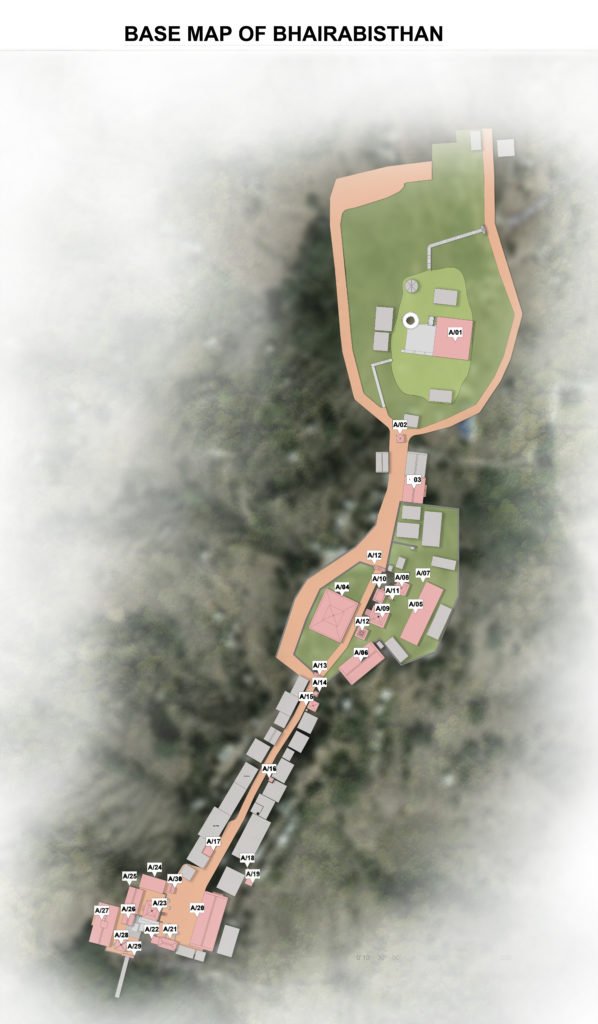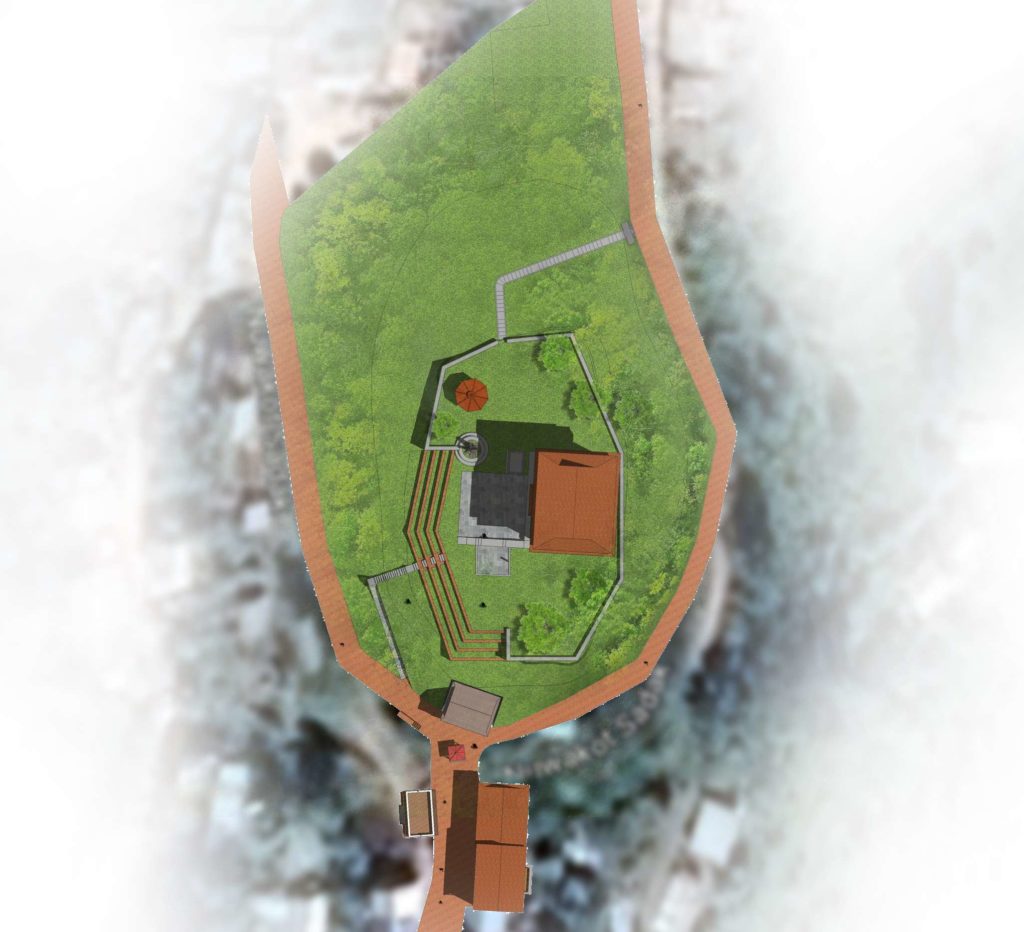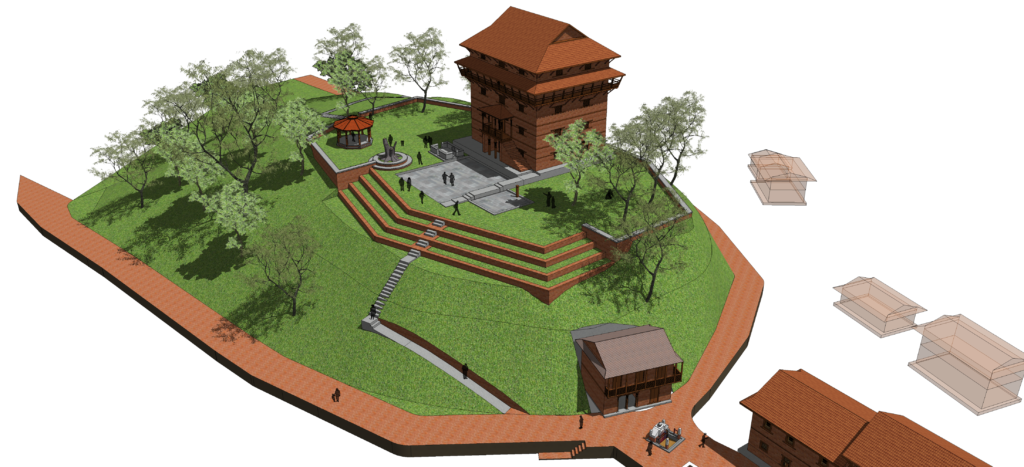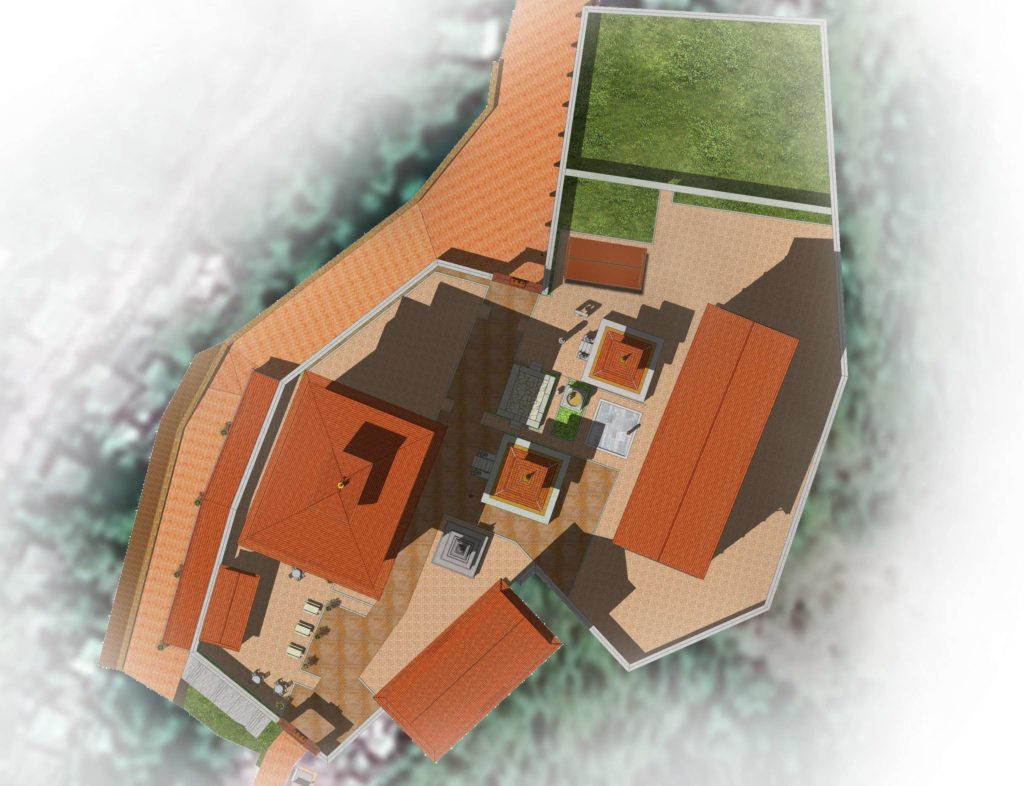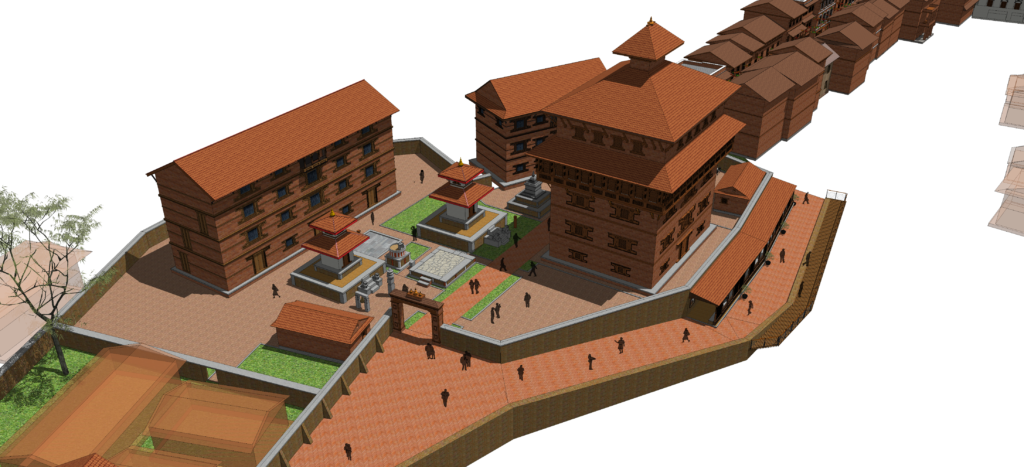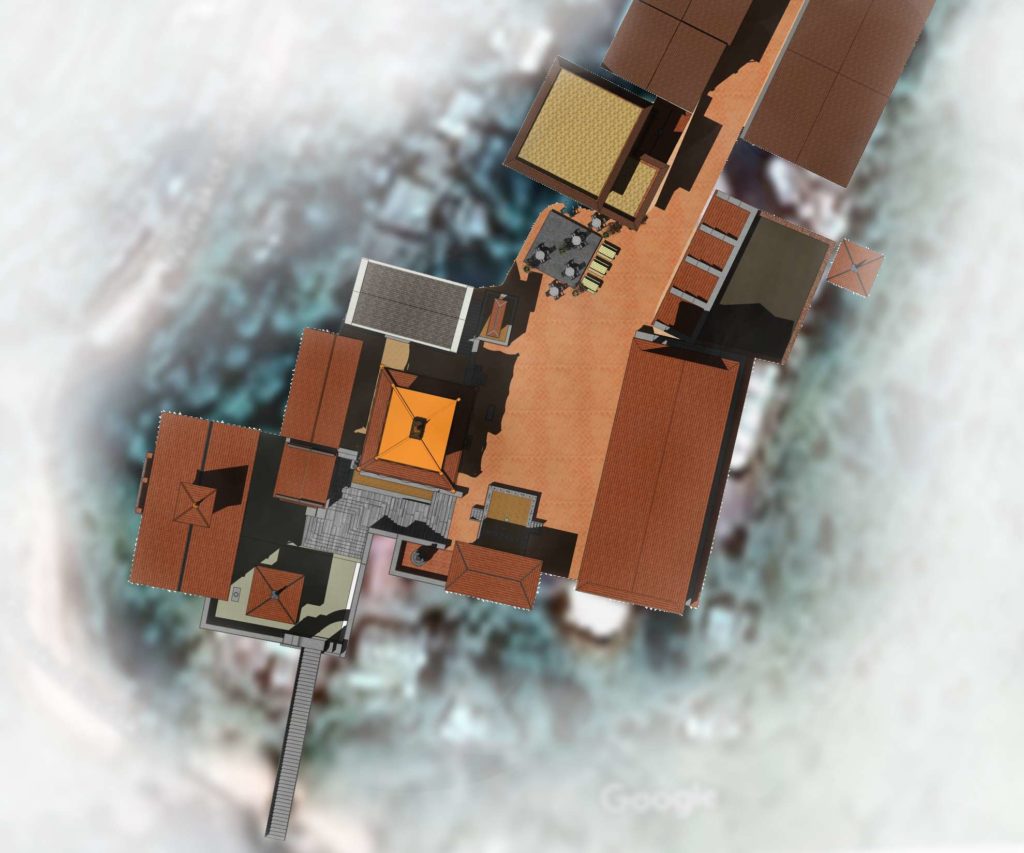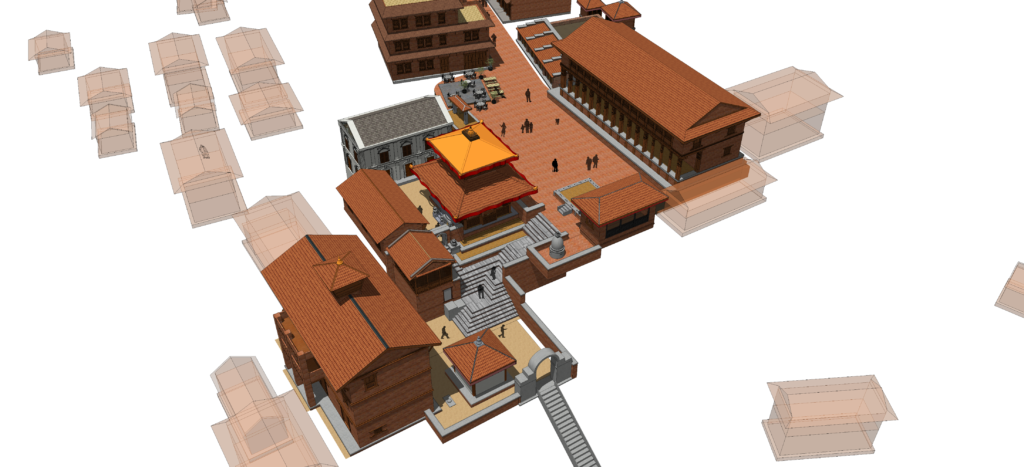Course: Design Studio VIII
Team: Pukar Bhandari, Purushottam Adhikari, Sabina Shrestha, Sambid Ghimire, Shreejan Maharjan, Sudeep Singh, Maria Boletou
Project Summary
The historical palace area of Nuwakot located at 76 km far west-north of Kathmandu has been regarded as an important place since ancient time. Before 1744 AD, Nepal was divided into numerous tiny States. To build a single strong nation, King Prithvi Narayan Shah of Gorkha led the unification campaign from this region. During that time, Nuwakot as a colony of Kantipur (Kathmandu) was regarded as the western main gate to enter the valley. This place was also popular as the main route for trade with Tibet.
The obligation to conserve the architectural heritage of the community is as important as it is our duty to conserve the significant built heritage and its values or traditions of previous eras. More than ever, architectural heritage everywhere is at risk from a lack of appreciation, maintenance and care. Some have been lost and many are in danger. Many monuments of Nuwakot are living heritage and it is essential to understand, define, interpret and manage it well for future generations.
There is a strong relationship between heritage conservation and the Architecture programs, which meant of learning how to deal with heritage, conservation processes, and how to design with understanding history, culture and values, by architects, who are responsible for the design to preserve, reuse, reconstruct, and implement the conservation projects.
During our conservation studio in Nuwakot Bazar, we have been able to understand the need and underlying problems for conservation in Nuwakot Bazar settlement. Though the present condition of historically and culturally important Nuwkot Bazar looks disheartening right now, it also provides us with ample opportunity to look into it with perspective of conservation. Proposing minimum required intervention for the monuments, we have, to our best, tried to document, study, analyze and propose strategic plans for the monuments and surrounding settlement. This proposal includes proposed zonings, interventions, development and conservation strategies for the area.
We are hopeful that the outcome of this conservation studio will be fruitful in sowing seeds of conservation and revitalization in the Nuwakot Bazar settlement. However, this proposal is by no means a complete concrete proposal due to limitations in our studio. There is need of further study and greater acceptance and verification of our documentation and basis of interventions on local level and by authorities before working further on the proposed interventions.
